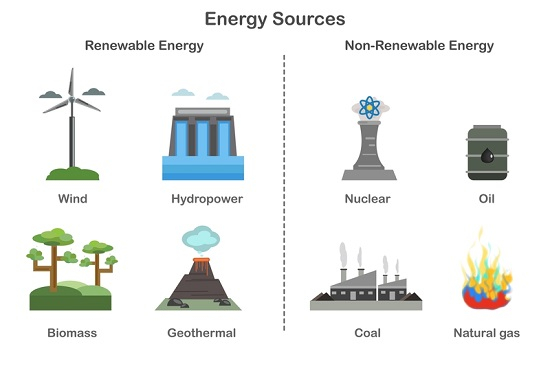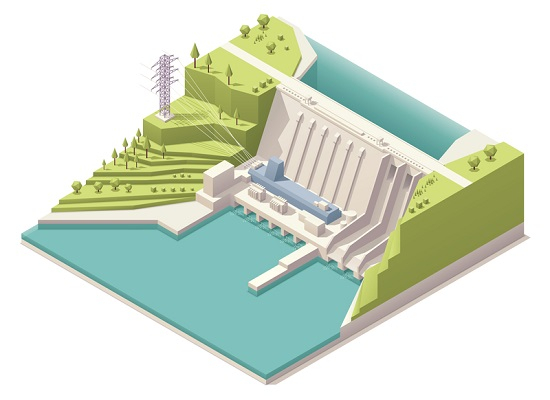Introduction
With rapid development and modernization, the need for abundant low-cost energy is growing tremendously. To fulfil these energy requirements, humans exploit energy resources in various ways. Although the various techniques and procedures followed in this process impact the environment positively, the negative impacts are much more harmful and of major concern to the sustainable development of society.
What is an Energy Resource?
Energy resource, as the name suggests, can be defined as a natural resource that can either acts as a source or can be converted into other forms of energy via human intervention to fulfill the energy needs. For example, coal-fired plants generate electricity by burning coal (a natural resource). Similarly, the heat energy of the sun can be converted into electrical energy with the help of solar cells.
Explore our latest online courses and learn new skills at your own pace. Enroll and become a certified expert to boost your career.
Need for Energy Resources
Energy resources is widely used in agriculture, transportation, information technology, and industrial production. These energy resources act as the backbone of the world by fulfilling our day-to-day energy needs. Moreover, these are the primary source of existence for humans.
Types of Energy Resources
Energy resources can be classified based on the following parameters:
- Based on traditional use: Conventional and non-conventional sources of energy.
- Based on long-term availability: Renewable and non-renewable sources of energy.

Figure: 1 Classification of energy resources
Conventional and Non-Conventional Sources of Energy
- Conventional sources of energy are sources that we have been using for a long time. For example- burning coal, wood, etc.
- Non-conventional sources of energy are those sources that are newly discovered. For example- wind energy, solar energy, etc.
Renewable and Non-Renewable Sources of Energy

Renewable sources of energy are those sources that can be renewed naturally over time. Some of the common examples are discussed below –
Solar Energy
Energy in the form of heat comes directly from the sun (which is inexhaustible). The advantage of using solar energy includes its neve ending supply and its non-polluting character. However, despite being present abundantly in nature, its high cost of setup, conversion, and collection makes its exploitation difficult in many places.

Hydro Energy
Water stored in the dams can be used to generate electricity. Water is renewed naturally by the process of the water cycle, making it a renewable source of energy. Hydropower generation is consistent because of its presence every day and night, which is quite advantageous over solar power which can only be harnessed during the day.

Non-renewable sources of energy are those sources of energy that are once used and cannot be renewed again. Some common examples are discussed below:
- Fossil fuels: fossil fuels like coal and petroleum are used extensively for energy generation. Fossil fuels supply more than 80% of the energy needs of industrially developed countries hence, fossil fuels, are exploited at a very large scale. The burning of fossil fuels generates carbon dioxide, which is harmful to humans as well as the environment.
- Nuclear energy: Uranium is used as a fuel in nuclear energy generation. Nuclear energy is advantageous over other non-renewable resources of energy. It provides us with carbon-free power which is beneficial for the environment and generates much more energy in less land. . More importantly, it generates minimal waste.
What are Environmental Impacts?
Any natural resource, whether renewable or non-renewable, is exploited to harness purposeful energy from it. Environmental impacts can be defined as the generation of any new product or process during the exploitation of natural resources, which affects the environment either directly or indirectly. These impacts can either be positive or negative.
Impacts of Energy Resources on the Environment
Environmental impacts of energy resources are either beneficial or harmful to nature. The positive and negative impacts of various energy resources are mentioned below:
Positive and Negative Impacts of Renewable Sources of Energy
Positive Impacts
- Reduces greenhouse gases and carbon emissions: Solar panels do not require the burning of fossil fuels to generate energy. Hence, we get carbon-free energy and in turn prevent global warming.
- Reduces Air Pollution: Solar energy does not involve the combustion of any fossil fuels such as coal, petroleum, etc. that generate hazardous gases such as sulfur dioxide, and carbon monoxide to the environment which are harmful to humans.
- Fuel-free energy: The blades of turbines are rotated by the force of the blowing wind, which in turn, drives the generators to produce electricity. Hence, no fuel is required in this process.
Negative Impacts
- Habitat Loss: For the generation of a large amount of electricity, vast land is needed for the installation of solar farms. Hence, huge tracts of land are cleared along with the vegetation in that area.
- Exposure to Hazardous Materials: During the manufacturing process of many photovoltaic cells, harmful chemicals are used for cleaning semiconductor surfaces. Workers in the manufacturing area are exposed to such chemicals which are harmful to their health.
- Wind turbines as a threat to wildlife: Wind turbines threaten birds and other flying creatures in the area.
Positive and Negative Impacts of Non-Renewable Sources of Energy
Positive Impacts
- Easy to store – Most non-renewable sources of energy can be easily stored and hence are available for long-term use.
- Economic development – The production of oils, coal, and natural gas along with their transportation generates a lot of profit for the country. Hence, contributing to economic development.
- Creation of jobs – A lot of job opportunities in extracting, transporting, and refining non-renewable resources are generated.
Negative Impacts
- Environment Unfriendly – The use of non-renewable sources of energy, especially fossil fuels such as coal and petroleum, on burning, generates a lot of harmful gases such as carbon dioxide, carbon monoxide, sulfur dioxide, etc.
- Unsustainable – The use of non-renewable sources of energy is degrading the environment at an alarming rate. If this trend continues, it will get very difficult for our future generations to survive.
- Non-Degradable by-products – The by-products generated after burning fossil fuels are non-degradable and hence pollute the environment.
| Renewable Sources | Impacts | Magnitude |
|---|---|---|
| Solar energy | Toxins | Minor – Major |
| Wind Energy | Bird strike Noise | Minor |
| Hydro Energy | Displacement, Agriculture and River damage | Minor – Major |
Table 1: Negative impacts of renewable sources of energy.
| Non-Renewable Sources | Impacts | Magnitude |
|---|---|---|
| Coal | Human deaths, Greenhouse gas emissions. | Major |
| Petroleum | Human deaths, Greenhouse gas emissions. | Major |
| Natural Gas | Human deaths, Greenhouse gas emissions. | Minor – Major |
Leave a Reply